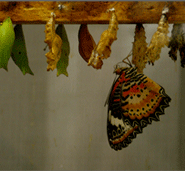I am standing on a secret bend of an L-shaped alley, somewhere amidst the labyrinthine expanse of the INA market. It is 8 in the morning and the firmly shuttered shops around me are beginning to stir back into life. As the clamour of lazy footsteps slowly takes over, I peek around corners hoping to catch, off guard, the people I can hear hard at work, like elves in a shoemaker’s factory. Quietly but with vigorous, practiced precision, a flimsy web of people around me are sinking their hands into baskets and cartons, pulling out fresh produce to display on neatly laid out shelves. The reds against the greens against the yellows: this structure I had suddenly stumbled upon is all preordained and systematic.
Just as my eyelids begin to droop under the monotone of the trained exactitude of the presentation around me, I long for that moment of chaotic madness that must have predated this rule of method. As I concentrate, I imagine the fish line’s fine orderliness that currently holds together the stuff around me in painstakingly tidy, stiff little boxes, suddenly snap under the weight of it all, unleashing a sudden wave of things (goods that presently appear somberly significant and sensible in their prescribed spots in stores stuffed ceiling to floor) that engulf us watchers under its tremendous volume. And when its yawning splash subsides, we will sit, legs sprawled, amid the bits that it will leave behind, odds and ends, stuff waiting to be ordered again.
The market place is perhaps the perfect site to witness this constant tug of war between chaos and order, negotiations between saleable surface attraction, convenience and the beauty of efficiency. There is a variety of planning involved in this process, ‘designing’ spaces before design became a hip word and supermarkets and home interiors began being planned on CAD. There is an inexplicable vitality in the way things are done in markets and my little excursion today is to try and see and sense more of it. As the day progresses, I make my way to my favorite section of the bazaar, cutting through the rapidly accelerating buzz around me.
First, I see blocks of ice: rows and rows of pristine white, glistening, smooth blocks that effortlessly glide from one end to the other on the grimy floor. The many participants (there are about four of them at this point) in this performance expertly move the ice pieces around with hooked rods, both formidable looking and evidently effectual.
One of them, Bomti, frail in his gigantic slippers and oversized t-shirt, steps over the blocks stacking them one over the other (like in igloo walls) on the platform where the fish will soon be put on display. Neatly he cuts the blocks into slimmer sheets or breaks them into chunks that fit into gaps with haphazard grace. By the end of the exercise he has managed a solid and surprisingly tidy base of ice sheets for the fish to be exhibited on and it is only now they finally make an appearance.
Bomti flings the bigger ones behind and stacks the smaller ones in the first row, or so I think, trying to make sense of a style that seems beyond the scope of my aesthetic vocabulary. I am overcome by the performative exuberance and the show of strength and comedy in the diligent man before me. He sprints from end to end on the platform calling out to his colleagues below, who fling him fish after fish on cue. And once his limber gamboling is over there they lie, the fruits of his labour, the fish in their neat little heaps, alongside the buckets of crabs, squids, clams, oysters and other sea monsters. As the lights come on, I am consumed by their glistening silver scales and the white deadpan eyes. I wait with bated breath as the sensual theatre of the fish market unfolds around me and watch the fleeting tranquility of order quickly shatter under the weight of a mundane Monday morning.
Bomti is a sea food vendor based in Delhi.
Parni Ray is a writer based in Delhi.
Editor's Note.
Odor and Disarray
Design. Deconstructed: de - sign. A symbol, uncreated, recreated. A re-representation.
Design is what separates the human kingdom from the animal kingdom: it is wildness made deliberate, nature articulated, instinct systematized.
Read MoreDesign. Deconstructed: de - sign. A symbol, uncreated, recreated. A re-representation.
Design is what separates the human kingdom from the animal kingdom: it is wildness made deliberate, nature articulated, instinct systematized.
Also in this issue
Illusion: Seeing Beyond Seeing
Meaning: In Search of Significance.
Melody: A Different Tune
Rhythm: Ordering Time









